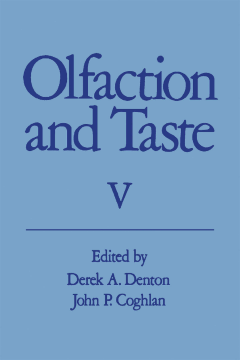
Additional Information
Book Details
Abstract
Olfaction and Taste V contains the proceedings of the Fifth International Symposium on Olfaction and Taste, held at the Howard Florey Institute of Experimental Physiology & Medicine, University of Melbourne, Australia, in October 1974. Contributors discuss the knowledge about olfaction and taste, including the anatomy of receptors and their ultrastructure, innervation of receptor fields, and the processes of receptor ""turnover"". Themes ranging from taste modifiers and receptor proteins to afferent coding; how the sensory code for taste and olfaction are processed and sharpened; and conditioned taste aversions and other taste learning effects in food and fluid intake are discussed.
This book is organized into 14 sections encompassing 73 chapters and begins with an introduction to the phylogenetic origins of sweet taste. The discussion then shifts to behavior and the evolutionary emergence of the chemoreceptor systems. This book provides an overview of the basic modalities of taste throughout the vertebrate phylum, along with the powerful selection pressures that operate to contrive phylogenetic emergence of these modalities with attendant survival advantage. It also looks at each modality within the sensory organization of the species set against environmental circumstances during evolution that might be postulated as favoring its emergence and refinement, for example, the emergence of bitter in relation to poisoning. The ontogenesis of taste and some special instances such as chemoreception in aquatic animals are also examined.
This book is aimed at students and scientists interested in the fascinating and important problems of chemoreception.
